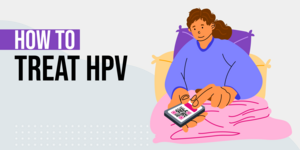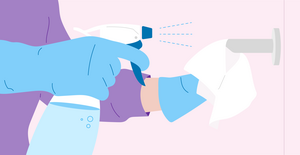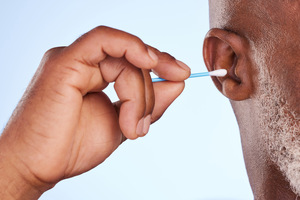Find a Botox Specialist
What is Botox?
Botox is an injectable treatment that can reduce the appearance of unwanted lines and wrinkles on your face. According to the Oregon Health and Science University (OHSU), Botox is the most common cosmetic procedure performed in the United States. People generally seek this treatment to rejuvenate their overall appearances and minimize lines that make them appear older, worried, or angry, adds the university.
The primary Botox definition is botulinum toxin type A. The active ingredient in this medication is a toxin produced by a bacterium called Clostridium botulinum, says the National Institutes of Health (NIH).
How is Botox used?
Botox is generally used to smooth and reduce the appearance of fine lines and wrinkles, particularly those around the mouth, eyes, lips, nose, and brows, reports OHSU. It may also be used to treat health problems including severe underarm sweating, uncontrollable blinking, chronic migraine, and an overactive bladder, reports the NIH.
How does Botox work?
According to the NIH, Botox injections work by blocking certain nerves that control muscles, or by paralyzing certain muscles. This can prevent muscles—such as those in your brow—from moving and contracting to form fine lines and wrinkles. The NIH adds that the effects of Botox are temporary and usually only last between three and 12 months, depending on the areas being treated.
How is a Botox procedure done?
Botox injections are usually performed by a dermatologist or trained injectionist in a clinical outpatient setting. Botox treatment is minimally invasive and requires no anesthesia. According to Washington University and OHSU, the procedure is relatively painless and lasts for only a few minutes.
According to OHSU, during your appointment, your doctor will inject the Botox solution into the areas of your face you want to be improved and rejuvenated. You can then resume your normal daily activities without downtime. According to the University of Southern Florida, Botox treatment produces minimal to no bruising, and results are often noticeable within four to 10 days after your procedure.
What areas of the body can be treated with Botox?
When used for cosmetic enhancements, Botox is typically only used on the face, according to Washington University. Many people choose to get Botox on the forehead and Botox for frown lines. Botox can also be used to reduce the appearance of scarring on the face, reports Washington University.
Your dermatologist can examine your face and the areas you want to be treated with Botox to confirm whether these injections can help you meet your personal aesthetic goals. If you are interested in getting Botox to treat another health condition such as severe underarm sweating, talk to your doctor about whether this treatment can help improve your condition.
How long does a Botox shot last?
The NIH says the effects of Botox injections can last between four and 12 months. Washington University and OHSU say Botox results usually only last between four and six months. Your dermatologist can give you a more realistic timeframe for what to expect in regards to the long-term effects of Botox.
Find Find a Botox Specialist near you
- Alabama
- Alaska
- Arizona
- Arkansas
- California
- Colorado
- Connecticut
- Delaware
- Florida
- Georgia
- Hawaii
- Idaho
- Illinois
- Indiana
- Iowa
- Kansas
- Kentucky
- Louisiana
- Maine
- Maryland
- Massachusetts
- Michigan
- Minnesota
- Mississippi
- Missouri
- Montana
- Nebraska
- Nevada
- New Hampshire
- New Jersey
- New Mexico
- New York
- North Carolina
- North Dakota
- Ohio
- Oklahoma
- Oregon
- Pennsylvania
- Rhode Island
- South Carolina
- South Dakota
- Tennessee
- Texas
- Utah
- Vermont
- Virginia
- Washington
- Washington DC
- West Virginia
- Wisconsin
- Wyoming
Find a Botox Specialist FAQs
How long does Botox last?
The effects of Botox may last anywhere between four and 12 months, says the NIH. Ask your doctor or dermatologist to confirm how long your results will last based on the areas of your face or body being treated.
Is Botox safe?
Botox is relatively safe and does not produce adverse side effects, reports the NIH. However, OHSU states that Botox may cause allergic reactions like any other medication, and temporary side effects including dry mouth and flu-like symptoms are common with this cosmetic treatment.
OHSU adds that bruising affects less than 15% of Botox patients and that the eyelids or eyebrows may droop following injections made around the eyes. It further adds that these complications are typically minimized as long as you receive treatment from a doctor who is trained and experienced at administering Botox.
What does Botox do?
Botox is an injectable cosmetic treatment that temporarily reduces fine lines and wrinkles on the face. For example, as reported by the NIH, if you want to minimize the appearance of under-eye wrinkles, Botox can help smooth these lines to help you look more alert and youthful. According to the NIH, Botox may also be used to treat other health conditions, including severe underarm sweating, chronic migraine, and overactive bladder.
What is Botox made of?
The active ingredient in Botox is a toxin produced by the bacterium Clostridium botulinum, reports the NIH. In large amounts, this toxin can cause an illness that affects the nerves, but in small amounts, this toxin can smooth the fine lines and wrinkles that contribute to an older appearance.
Does Botox hurt?
According to OHSU, Botox injections are relatively painless and comparable to the feeling of an insect bite. However, the NIH says that Botox may cause pain at the injection site, along with additional side effects of redness, bleeding, and swelling.
How much are Botox injections?
According to the University of Utah, the cost of your Botox treatment will depend on the number of units needed to address your skin concerns. The NIH reports that the optimal dose of Botox when used in dermatology is 20 units.
Ohio State University reports that the average cost of Botox for a single area of treatment such as crow’s feet ranges between $200 and $300, and Botox may even be covered by your health insurance if it is being used to treat a medical condition.
Ask your doctor or dermatologist to confirm the exact amount of your Botox treatment prior to your appointment.
How long does Botox last in the forehead?
When injected into the forehead, Botox can produce results that last between three to four months, reports the University of Utah. Your doctor or dermatologist can give you more realistic expectations regarding how long your results will last based on the severity and volume of fine lines and wrinkles on your forehead.
Is Botox dangerous?
The NIH reports that Botox is relatively safe when used as a cosmetic treatment. However, OHSU says Botox may be dangerous or risky for those who have an infection near the injection site or who are allergic to the ingredients in Botox. According to the university, Botox should also be avoided by females who are pregnant or nursing, and by those who have certain neurological conditions.
Where should Botox not be injected?
The NIH reports that botox may cause adverse effects when injected into certain places on the face. For instance, the NIH reports that injections placed on or under the middle part between the eyebrows may cause a condition called eyelid ptosis, or drooping eyelids. OHSU advises against having Botox injected into areas with sagging skin, as these areas will not respond to treatment.
One of the best ways to reduce your risk of adverse effects with Botox is to receive treatment from a doctor who specializes in dermatology and who is trained and experienced with administering these injections, reports the NIH.
Where can I get Botox treatments?
Botox treatments are widely available from doctors and dermatologists who specialize in skincare and cosmetic rejuvenation treatments. Use Solv to find and make a same-day appointment with a dermatologist in your local area who offers Botox treatments. Solv features only the highest-rated providers, so you can relax knowing you and your family are receiving the best in quality health care.
Solv has strict sourcing guidelines and relies on peer-reviewed studies, academic research institutions, and medical associations. We avoid using tertiary references.
Everyday Healthcare, Simplified
Expert advice to help you live your best life

 LinkedIn
LinkedIn






